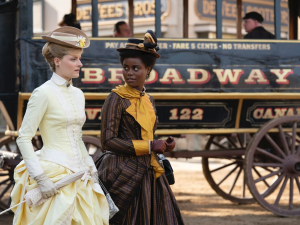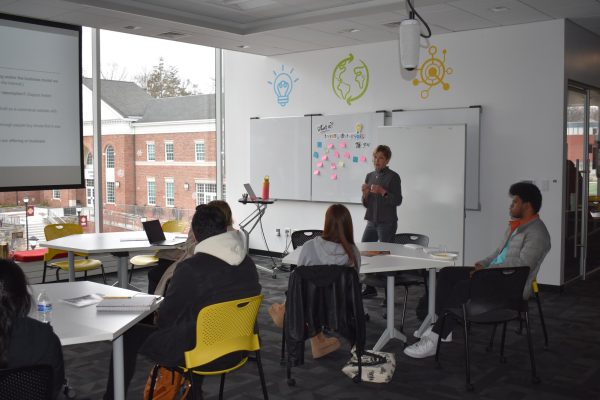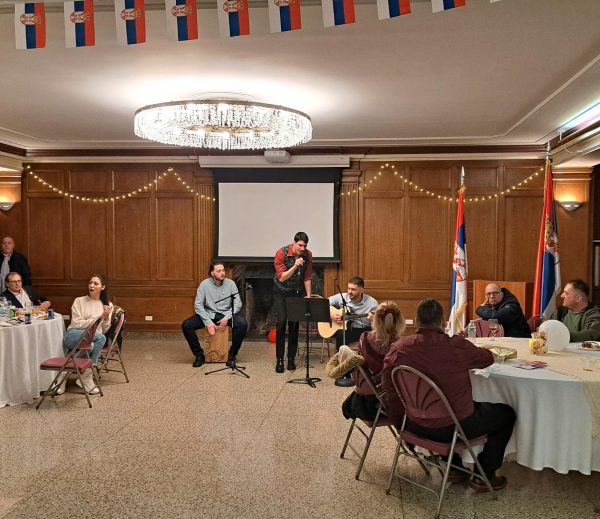Unforgettable Poland: Documenting the past
April 2, 2017
“Those who do not remember the past are condemned to repeat it.” George Santayna said.
This chilling quote is located on the wall in a block in Auschwitz I. I had the privilege of being a member of the Poland Spring Break Study Abroad class this year, and my understanding of this quote got better throughout the week. Dr. Elena Procario-Foley, Dr. Malissa Leipold, 17 classmates and myself spent about seven days staying at the Centre for Dialog and Prayer in Oswiecim, Poland. Oswiecim is commonly known as the location of the Auschwitz concentration camp during World War II, when Poland was under the control of Nazi Germany.
Throughout the Spring semester the class had the opportunity to learn about the Shoah, or Holocaust, and more specifically about the impact the war had on the Jewish religion and Jewish-Christian relations. As much as we learned in the three hour class once a week before leaving, nothing can prepare you for seeing what is in Poland. As a class we got to go to Auschwitz I and Auschwitz II–Birkenau in addition to other places in Poland related to the Holocaust and Jewish-Christian relations. In Auschwitz I the class and I got to walk around and visit the different blocks. To the right, when we walked into Block 4, was a map showing places where trains, full of deportees, originated from all over Europe. Also in Block 4 was an urn containing the ashes of the murdered. Auschwitz was open for a little over 4 years and during that time at least 1.3 million people were transported, including about 1.1 million Jews. This 1.3 million is only a fraction of the 6 million victims murdered during World War II.
As we continued to walk we entered into Block 5. Block 5 contained glass containers full of prisoners’ belongings that had not been destroyed by the SS Soldiers. The containers contained thousands upon thousands of glasses, pots, pans, shoes and other belongings. This wide range of items were a chilling reminder that these people really weren’t aware of what awaited them after their arrival in Auschwitz. One of the most disturbing rooms in all the blocks was the room containing the hair of prisoners. Male and female Auschwitz prisoners had their hair cut off once entering the camp, the hair was collected for industrial use.
Throughout the day we saw and learned about different things that happened at the camp. We also learned about the stories of some prisoners. One of those stories was about St. Maximilian Kolbe. St. Kolbe died voluntarily taking the place of a prisoner with a wife and child sentenced to death. Located in Block 11, Cell 20 is a small cell where a memorial is now located, remembering the selfless act of St. Maximilian. We also saw the “death wall,” where people were shot as a method of execution, the gas chamber and crematorium. It was built before the war as a Polish army ammunition bunker and the home a Rudolf Hess, the first commandment of Auschwitz, whose five children and wife lived just a fence apart from the concentration camp.
The day after our first visit to Auschwitz I, we went to Auschwitz II- Birkenau. At Birkenau there are train tracks, trains and brick barracks. The thing that strikes most people about Birkenau is its size. Auschwitz II- Birkenau was the largest Nazi German concentration camp and the largest center for the extermination of victims. It’s hard to put into words what the size feels like in person. It is bigger than thousands of football fields put together and today is very quiet. The silence can be scary when you realize how much noise was made in the past in the exact spot you are standing in.
Also in Auschwitz II – Birkenau is a memorial for all the victims of the death camp. The memorial was created in 1967 taking the place of an earlier memorial created in 1947. There are also granite memorial plaques located near a small pond into which the ashes of corpses burned in a nearby crematorium were dumped. Almost 30 million people from all over the world have visited Auschwitz II- Birkenau since it’s opening and have been a witness to what remains.
Most people learn when they are younger about the Holocaust and question how an event like the Holocaust could have ever happened. After coming back from Poland, that question has become one that I think about often and one that I know I will never have the answer to.
I have also discovered through this experience that knowledge is power. Knowing what happened in the past gives me the motivation to work towards a world where this kind of deliberate killing of a large group of people and this kind of hate won’t be acceptable. This experience has opened my eyes and because I have seen what I have seen I will never forget.












